Phenyltrichlorosilane
Synonym(s):Phenyltrichlorosilane
- CAS NO.:98-13-5
- Empirical Formula: C6H5Cl3Si
- Molecular Weight: 211.55
- MDL number: MFCD00000479
- EINECS: 202-640-8
- SAFETY DATA SHEET (SDS)
- Update Date: 2025-01-27 09:38:02

What is Phenyltrichlorosilane?
Chemical properties
Phenyl trichlorosilane is a colorless to light yellow liquid.
The Uses of Phenyltrichlorosilane
Phenyltrichlorosilane can be used in the development of high-capacitance polymer dielectric for low-voltage organic transistors.
Preparation
The high-temperature condensation (HTC) technique proved to be very convenient and economical for the production of phenyltrichlorosilane and in recent years has become one of the main industrial techniques for its synthesis.
The synthesis of phenyltrichlorosilane by HTC technique is conducted according to the reaction:
HSiCI3 + C6H5CI →(HCI)→ C6H5SiCI3
In this case, similarly to the vinyltrichlorosilane case, in the conditions of synthesis (600-640 °C) there is a secondary reaction of reduction, which forms silicon tetrachloride and benzene. However, if the process is conducted in the presence of an initiator (5% of diazomethane), it is possible to reduce the temperature down to 500-550 °C. Then the secondary reaction proceeds very slowly, which increases the yield of phenyltrichlorosilane by 1.5 times. To suppress the reduction process, one can also add benzene and silicon tetrachloride into the reactive mixture. It is also possible to boost the yield of phenyltrichlorosilane and increase the degree of the chlorobenzene transformation by using two subsequent reactors.
General Description
A colorless liquid with a pungent odor. Flash point 91°F. Decomposed by moisture or water to hydrochloric acid with evolution of heat. Corrosive to metals and tissue.
Reactivity Profile
Chlorosilanes, such as Phenyltrichlorosilane are compounds in which silicon is bonded to from one to four chlorine atoms with other bonds to hydrogen and/or alkyl groups. Chlorosilanes react with water, moist air, or steam to produce heat and toxic, corrosive fumes of hydrogen chloride. They may also produce flammable gaseous H2. They can serve as chlorination agents. Chlorosilanes react vigorously with both organic and inorganic acids and with bases to generate toxic or flammable gases.
Health Hazard
Highly toxic; may cause death or permanent injury after short inhalation exposure to small quantity. Chemical burns to all exposed membranes and tissues with severe tissue destruction. Inhalation -- lungs may fill up with fluid or throat may swell causing suffocation. Eyes -- damage to corneas may cause blindness. Delayed: after oral exposure stomach and intestines may perforate or be obstructed by scar tissue.
Flammability and Explosibility
Non flammable
Potential Exposure
Phenyl trichlorosilane is used to make silicones for water repellants, insulating resins; heat resistant paints; and as a laboratory reagent
Shipping
UN1804 Phenyltrichlorosilane, Hazard class: 8; Labels: 8-Corrosive material.
Properties of Phenyltrichlorosilane
| Melting point: | -127°C |
| Boiling point: | 201 °C(lit.) |
| Density | 1.321 g/mL at 25 °C(lit.) |
| vapor pressure | 44.3Pa at 20℃ |
| refractive index | n |
| Flash point: | 196 °F |
| solubility | soluble in Chloroform,Benzene,Ether |
| form | liquid |
| color | colorless |
| Specific Gravity | 1.324 |
| explosive limit | 1.6-9.2%(V) |
| Water Solubility | reacts |
| Sensitive | Moisture Sensitive |
| Hydrolytic Sensitivity | 8: reacts rapidly with moisture, water, protic solvents |
| BRN | 508730 |
| CAS DataBase Reference | 98-13-5(CAS DataBase Reference) |
| NIST Chemistry Reference | Phenyl trichlorosilane(98-13-5) |
| EPA Substance Registry System | Trichlorophenylsilane (98-13-5) |
Safety information for Phenyltrichlorosilane
| Signal word | Danger |
| Pictogram(s) |
 Corrosion Corrosives GHS05  Exclamation Mark Irritant GHS07 |
| GHS Hazard Statements |
H312:Acute toxicity,dermal H314:Skin corrosion/irritation |
| Precautionary Statement Codes |
P280:Wear protective gloves/protective clothing/eye protection/face protection. P303+P361+P353:IF ON SKIN (or hair): Remove/Take off Immediately all contaminated clothing. Rinse SKIN with water/shower. P305+P351+P338:IF IN EYES: Rinse cautiously with water for several minutes. Remove contact lenses, if present and easy to do. Continuerinsing. P405:Store locked up. |
Computed Descriptors for Phenyltrichlorosilane
| InChIKey | ORVMIVQULIKXCP-UHFFFAOYSA-N |
New Products
Methyl (R)-1-Boc-4,4-difluoropyrrolidine-2-carboxylate 2,2-Difluoropropylamine hydrochloride tert-butyl 3-bromoazetidine-1-carboxylate (R)-1-Boc-3-hydroxypyrrolidine DIFLUOROACETIC ANHYDRIDE 2,2-Difluoropropionic acid Diallylamine, 99% Calcium hydroxide, 95% Aluminum oxide, basic 2-Bromophenylacetonitrile, 97% L-tert-Leucine,97% N-Hydroxy-2-methylpropanimidamide 4-(3,4-Dichlorophenyl)-3,4-Dihydro-N-Methyl-1-(2H)-Naphthalenimine (Schiff Base) 2-AMINO-3,5-DIBROMO BENZALDEHYDE [ADBA] L-Glutamic Acid Dimethyl Ester Hcl 10-Methoxy-5H-dibenz[b,f]azepine 5-Cyanophthalide N, N-Carbonyldiimidazole (CDI) Dibenzoyl Peroxide Titanium Dioxide 2-(Methylthio) Benzonitrile Sodium Acetate Anhydrous Allopurinol 1,5-DibromopentaneRelated products of tetrahydrofuran
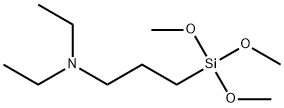
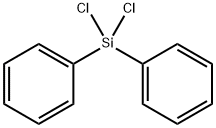
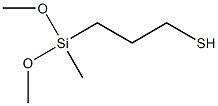
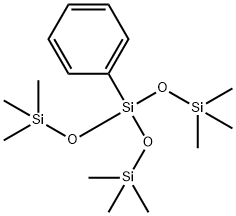
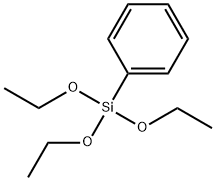


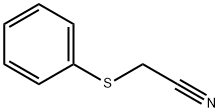
You may like
-
 Phenyltrichlorosilane CAS 98-13-5View Details
Phenyltrichlorosilane CAS 98-13-5View Details
98-13-5 -
 Trichloro(phenyl)silane CAS 98-13-5View Details
Trichloro(phenyl)silane CAS 98-13-5View Details
98-13-5 -
![Cis-2-(Bromomethyl)-2-(2,4-Dichlorophenyl)-1,3-Dioxolane-4-Ylmethyl Benzoate [CBB] 61397-56-6 99%](https://img.chemicalbook.in//Content/image/CP5.jpg) Cis-2-(Bromomethyl)-2-(2,4-Dichlorophenyl)-1,3-Dioxolane-4-Ylmethyl Benzoate [CBB] 61397-56-6 99%View Details
Cis-2-(Bromomethyl)-2-(2,4-Dichlorophenyl)-1,3-Dioxolane-4-Ylmethyl Benzoate [CBB] 61397-56-6 99%View Details
61397-56-6 -
 Ethyl-2-Chloroacetoacetate 609-15-4View Details
Ethyl-2-Chloroacetoacetate 609-15-4View Details
609-15-4 -
 CIS- BROMO BENZOATEView Details
CIS- BROMO BENZOATEView Details
61397-56-6 -
 609-15-4View Details
609-15-4View Details
609-15-4 -
![1-(6-Methylpyridin-3-Yl)-2-[4-(Methylsulfonyl)Phenyl]Ethanone [Ketosulfone] 99%](https://img.chemicalbook.in//Content/image/CP5.jpg) 1-(6-Methylpyridin-3-Yl)-2-[4-(Methylsulfonyl)Phenyl]Ethanone [Ketosulfone] 99%View Details
1-(6-Methylpyridin-3-Yl)-2-[4-(Methylsulfonyl)Phenyl]Ethanone [Ketosulfone] 99%View Details
221615-75-4 -
 27143-07-3View Details
27143-07-3View Details
27143-07-3
